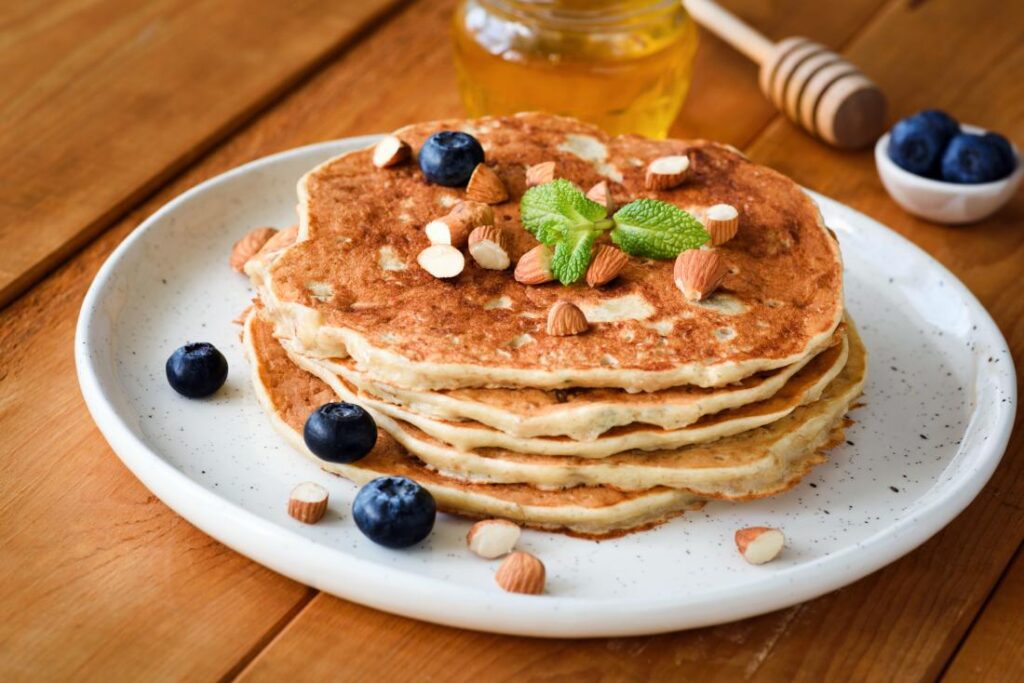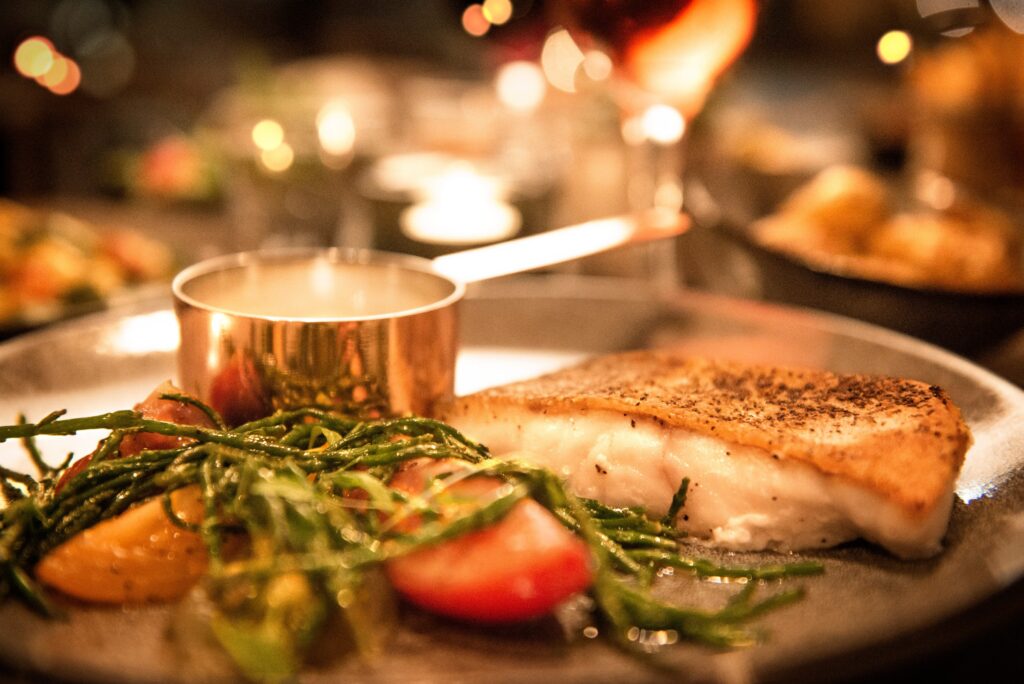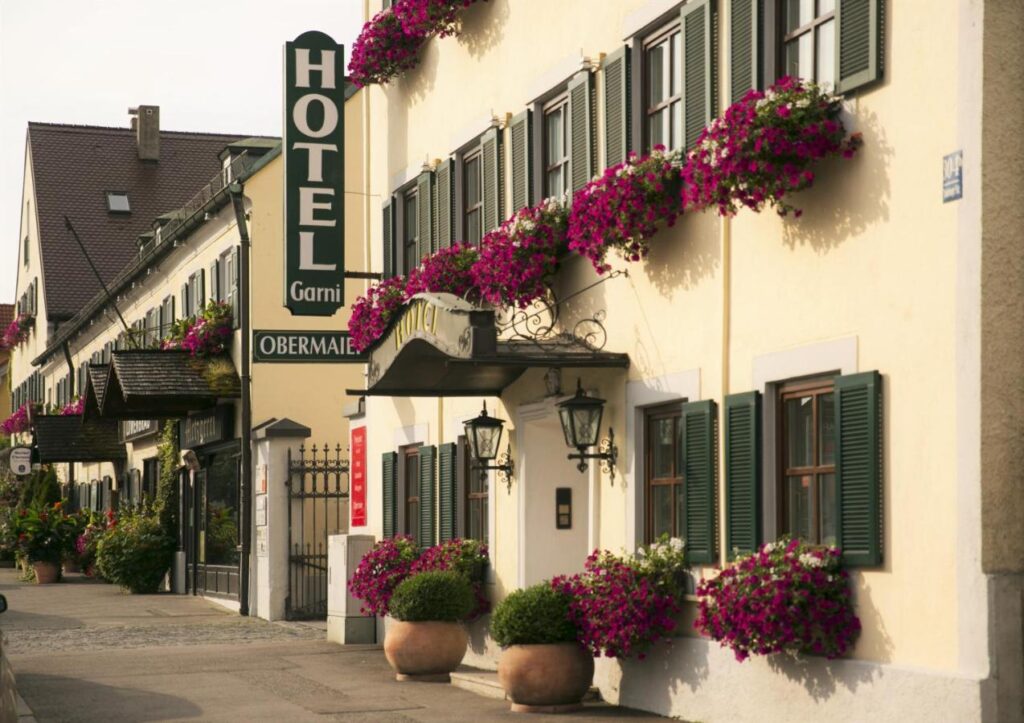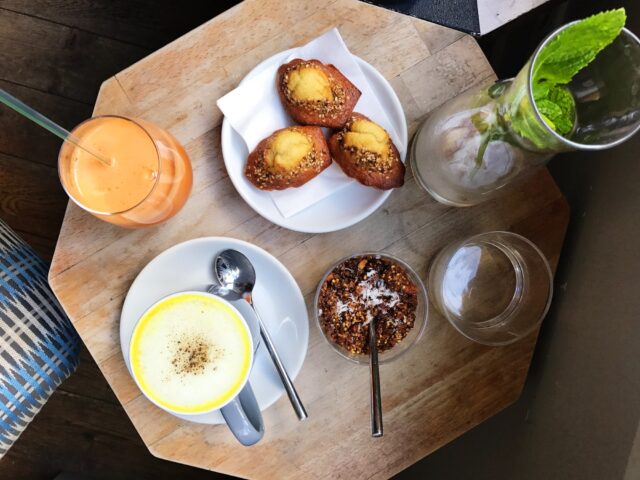Now that we’ve made it to 2024, and we’re nearly at the end of next year, I thought there might be some value in writing a review of my Gluten Free Guide to Germany today. I’ve put in a lot of time, planning and effort into this guide, so I’m excited to see how it’s doing.
When traveling in Europe, it is often necessary to avoid or cross-contaminate gluten. As a result, gluten-free travelers have a very difficult time. However, a gluten-free diet will not prevent you from enjoying the best of Europe’s food and wine. The following guide will help you to navigate the gluten-free scene in Germany.
Germany is the largest country in the European Union and is the home of luxury brands like Mercedes and BMW. It is also home to many historic sites and castles and is known as a beautiful country. But most importantly, it is a gluten free paradise.
Purchasing flour in North America is simple. You go to the store and buy a bag of all-purpose flour before returning home. Presto! However, things are more complex in Germany. Pastry flour Type 405 is for pastries, bread flour Type 812 is for breads, and all-purpose flour Type 550 is the closest to what we term all-purpose flour in Canada. There’s also Type 1150 (rye flours) and Type 1800 (pumpernickel flour), among other things. The ash content of the flour is represented by these figures; the greater the ash content, the more “whole grain” the flour is.

What is a celiac to do in a nation that seems to be obsessed with gluten-filled flours? Do not be concerned; eating safely in Germany is possible. Simple meat and vegetable meals, as well as salads, were available throughout my trips. While gluten-free choices aren’t as common in bakeries, stores do have a variety of gluten-free goods that may be used in the kitchen.
Gluten-Free Restaurant Card Customized for Germany
To begin, this comprehensive gluten-free restaurant card will assist you in communicating your dietary limitations and determining what is acceptable and dangerous from the menu. The card was made using celiac-specific research, cross-contamination warnings, and a double-checked translation from native speakers. The card’s food names and meals are also double-checked for correctness with various German areas.
Note: The card may be purchased via Gumroad, a reputable 3rd-party store that utilizes https to ensure that your information is secure. I am not collecting emails or personal information from those who purchase the card.
What makes this gluten-free card unique?
On my trips, I tried many different translation cards and still felt sick. I may be more sensitive than other celiacs, but even a little quantity of contaminated frying oil or wheat-thickened food sauce may make me sick for days. Not to mention the subsequent joint discomfort and inflammation.
This card stands out for the following reasons:
- It does not utilize all of the local food names to indicate what to eat and what to avoid.
- Makes a point of mentioning the dangers of cross-contamination.
- Celiac disease is studied by celiacs; and
- A native speaker who is acquainted with the illness and local cuisine translated the text, which was then double-checked by a second translation.
On the purchasing page, you may get an English version of the card so you know exactly what you’re getting.
Many thanks to Frank, whose wife has been diagnosed with celiac disease, and to Max for his schnitzel picture.
Gluten-Free German Dishes and Snacks

According to translations, my trips in Germany, and German readers who are also celiac, the following meals are frequently wheat-free in Germany.
As with any location, whether at home or abroad, it’s essential to double-check that no flour was used in the sauces or to thicken them on a case-by-case basis.
- Sauerkraut is fermented cabbage that has been coarsely shredded and served warm with pork or sausages.
- Gurkensalat is a cucumber salad made with vinegar, sour cream, and dill (SO GOOD).
- Kartoffelsalat: Potato salad, traditionally prepared with cream or mayonnaise in Northern Germany and vinegar and broth in the South. It may be served warm or cold, and it can contain bacon, pickles, eggs, or radish. Confirm that the mayonnaise dressing was prepared in-house and not using store-bought wheat-added mayo.
- Rinderrouladen: Beef rolled in onions and bacon, but watch out for the gravy. Corn starch is usually used in this recipe, although bouillon cubes or flour may be used instead.
- Tomatensalat is a tomato salad that is often prepared with fresh herbs, sliced onions, oil, and vinegar.
- Braten mit Rotkohl: Roast with red cabbage – make sure the gravy is still good.
- Erbsensuppe is a classic flour-free split pea soup. Ascertain that this is the case.
- Fleisch: Meat, particularly grilled (gegrillt), baked (im Ofen gegart), or roasted (gegrillt/gebraten) meats. Any marinades should be double-checked, and breading and gravy should be avoided.
- Vegetables, fresh, grilled, or roasted. Inquire about marinades, and stay away from breading, tempura, and gravy.
- Eisbein is pig knuckle that has been salt-cured and smoked. It’s available without the sauce or gravy.
- Käse: cheese; nevertheless, cream cheeses (some of which are thickened with wheat byproducts) and specialty cheeses such as beer cheese (Bierkäse or Weisslacker) are not safe.
- Milchreis is a kind of rice pudding that is often topped with cinnamon/sugar or fruit.
- Frucht: fruit.
In Germany, there are a variety of shopping options as well as gluten-free restaurants.

Days in the summer in Germany
Gluten-free ingredients may be found in a variety of locations, ranging from small groceries to larger chain stores and organic stores.
Generally:
- Reformhaus – A health (food) shop in general.
- Organic Store/Organic (Super)Market Bioladen/Biomarkt
Gluten-free goods are available in the following supermarkets. Many major supermarket chains in Germany sell gluten-free goods labeled glutenfrei or with the German Celiac Society (DZG) emblem. The emblem includes the “crossed grain sign,” an international mark that assures celiac disease sufferers that the product is safe to eat. According to the Association for European Celiac Societies, “the Crossed Grain Trademark is generally recognized as a source of confidence and comfort that a product is safe to eat by members of worldwide coeliac organizations and a large percentage of non coeliac, but gluten sensitive, customers.” Our Europe-wide licensing scheme allows manufacturers and retailers to use the Crossed Grain Trademark on gluten-free products in over 30 European countries with only one trademark license.”
If a product poses a danger of cross contamination, it cannot be licensed.
This is the emblem you should be on the lookout for.
Edeka is Germany’s biggest grocery chain, with locations ranging from small stores to enormous “hypermarkets.” The bigger and more central the shop, like with each of the chains mentioned, the more probable it is to offer a wider gluten-free selection.
Rewe is a grocery chain with gluten-free goods at stores throughout the country.
Spar: A part of the Edeka group, Spar offers a limited variety of gluten-free items such as rice cakes, maize pastas, and other items.
Kaufland offers gluten-free and organic product lines.
At least some shops have dedicated gluten-free areas, according to Globus.
According to reader Marie, DM Drogerie is a pharmacy chain with a dedicated gluten-free goods department.
Real: A hypermarket (containing food, household appliances, and other goods) that can be found all over the nation.
The website of the German Celiac Society includes office and contact information in English.
Some translations that may be useful while shopping:
- Gluten traces may be present: gluten traces may be present.
- Gluten is a protein that is found in (gluten)
- Wheat / wheat flour (Weizen / Weizenstärke)
- (barley / barley malt / barley malt extract) Gerste / Gerstenmalz / Gerstenmalzextrakt (barley / barley malt / barley malt extract)
- Roggen Roggen Roggen Roggen Ro (rye)
- If you’re looking for a unique way to (oat)
- Dinkel Dinkel Dinkel Dinkel Dinkel Din (spelt)
- Grünkern is a German word for green (unripe spelt grain)
- Einkorn is a kind of wheat that is grown in (einkorn)
- Kamut is a kind of wheat (kamut)
- Bulgur is a kind of bulgur wheat (bulgur)
- Weiße Weiße Weiße Weiße Weiße Weiße Weiße Weiße Weiße Weiß (wheat protein)
- Weizenkleber (wheat “glue”) is a kind of wheat adhesive.
- Seitan is a term used to describe a (seitan)
Google searches for gluten-free smaller shops in Germany are suggested.
If you’re looking for smaller organic or gluten-free stores in Germany, reader Frank recommends doing the following searches:
Bioladen+Town
Biomarkt+town
Reformhaus+town
Also, here is Schar’s list of gluten-free eating establishments. Restaurants, pizzerias, cafés, bars, and ice cream parlors are among the businesses included in their database, as are listings of gluten-free stores.
Munich is gluten-free.

- Gasthof Obermaier in Munich has a gluten-free meal choice for the bulk of their menu. A great location to taste Bavarian specialities in a secure environment.
- Tushita Teahouse, also in Munich, has a lovely, welcoming environment with vegan and gluten-free snacks and a large tea menu to select from. If you don’t want to have a full meal, they offer a variety of gluten-free sweets and desserts to pick from, all of which are prepared with organic ingredients.
Freiburg is gluten-free.
- In Freiburg, the Kartoffelhaus offers gluten-free, lactose-free, and vegan menus, as well as a significant focus on locally produced cuisine. Although there are a few Asian-inspired meals on the menu, there are plenty of classic foods to sample, including potatoes prepared in a variety of ways!
Dusseldorf is gluten-free.
Hamburger without gluten

- Rudolph’s in Hafencity, Hamburg, provides gluten-free versions of the bulk of their pizzas, pastas, and Mediterranean meals, as well as gluten-free beer.
Berlin is gluten-free.
- Jute Bäckerei in Prenzlauer Berg, Berlin, is a gluten-free bread lover’s dream. Crispbreads, pastries, and gluten-free loaves abound, in addition to the buns and baguettes. They also provide a modest breakfast menu if you chance to be in Berlin on a Sunday morning.
- Suzette in Berlin’s Mitte is renowned for its genuine Brittany galettes, crepes, and ciders. Unfortunately, the crepes are not gluten-free, but the selection of 100% buckwheat galettes is wide and reasonably priced at 8 euro each.
- As a celiac who spent many years in Vietnam, Xua Quan in Berlin offers many of my tried-and-true favorites, as well as a properly labeled menu that caters to allergies (including gluten), vegan meals, and other intolerances.
- Tribeca Ice Cream is as healthy as it gets: it’s gluten-free, soy-free, plant-based, and its production methods are completely open. Their options aren’t bad, either: the salt maca caramel and the coconut ash, for example, are both delicious. You will not be able to visit just once.
- Glutenada is a gluten-free café in Berlin run by Lana, who is also happy to accommodate other dietary restrictions or allergies. You’ll want to come back just for her pastries. (The key lime pie coconut is a must-try.) Regrettably, this location has closed.
- Simply Keto is a café and store for those following ketogenic diets, which means no gluten and a lot of zoodles (zucchini noodles) and pastries prepared with gluten-free flours. They offer gluten-free goods and can also ship from their website. During the epidemic, Simply Keto’s café was closed.
- Simela, a gluten-free and lactose-free pizza restaurant in Berlin, has two locations: Koppenplatz and Savignyplatz, as well as delivery.
- I adore a good dosa, and when prepared according to the original recipe, this southern Indian delicacy is inherently gluten free. In Berlin, Chutnify comes to the rescue, where you may enjoy it to your heart’s delight.
- Gluten-free pizzas are also available at Cielo di Berlino in Berlin, which are made with a robust buckwheat crust and cooked separately / in a different location from the wheat crusts to avoid cross-contamination.
- Brotquelle is a gluten-free bakery and café with delicious breads, muffins, cakes, and more to pick from, as well as a warm wood dining room where you can stay and dine.
- Berlin is developing a reputation as Europe’s vegan capital, and although this may not be a concern for celiacs, it does indicate that the city is becoming more conscious of “alternative” diets. Many vegan eateries in Berlin offer gluten-free alternatives. In Berlin, for example, Attaya Cafe serves 100 percent vegan Afro-Italian food.
- Vapiano serves gluten-free pastas and pizzas, however owing to the common kitchen, there is a higher danger of cross-contamination, according to reader complaints. They’re a chain, and this link will take you to a list of all of their locations throughout Germany.
- Brunch, open-faced sandwiches, and a wonderful peaceful atmosphere can be found at No. 58 Speiserei in Neukölln.
In addition, Matt from Wheatless Wanderlust offers a comprehensive gluten-free Berlin guide here, and the Find Me Gluten Free app includes crowdsourced Berlin recommendations here.
A list of restaurants recognized as safe for celiacs by the German Celiac Association is accessible in a free PDF, and there is also a scrollable, searchable map to seek for gluten-free eateries here.
In Germany, what foods are not gluten-free?

Celiacs should avoid eating this at home.
- Spätzle: Wheat flour, eggs, water, and salt are used to make egg noodles. They’re often used in various meals.
- Sauerbraten: A pot roast prepared and cooked with a flour-thickened sauce (occasionally with gingersnaps).
- Kartoffelpuffer: Flour is used to thicken the batter in potato pancakes.
- Gemischter Salat is a mixed salad that may include processed meats or cheese.
- Frikadellen are meatballs that are traditionally prepared with breadcrumbs.
- Tenderized, flattened meat (kalb, veal/schwein pig) is dipped in flour and breadcrumbs before being fried. This breaded beef dish hails from Austria, but it’s also popular in Germany – and it’s certainly off-limits for celiacs! However, inquire whether a “Schnitzel natur” or “Schnitzel ohne Panade” (no flour crust) is available.
- Wurst: A sausage is referred to as a wurst. Because bread and wheat are often used as fillers, it is critical to inquire. Currywurst – pig sausage served with curry ketchup or curry sauce; Bratwurst – thicker, grey, mild sausage made of pork, veal, or beef; and Wiener Würstchen (hot dogs – sometimes produced without gluten) are all popular types of wurst.
- Döner Kebab: A Turkish meal consisting of thinly sliced meat grilled on a vertical rotisserie and placed inside pita or flatbread with a choice of toppings. In the same vein as shawarma or gyros. If you’re gluten-free, you may be able to consume it without the bread. However, cross contamination is a distinct possibility.
- Pan-fried fish filets: Before frying, they are typically dredged in flour. Request a grilled version or a fried version done in a separate pan without the flour.
- Semmelknödel: bread dumplings are strictly forbidden!
- Bienenstich is a cake made with bee stings. A yeast dough is used, along with a baked-on almond shell and a cream or custard filling.
- Gravies like Sauce, Jus, Soße, and Bratensaft are thickened with wheat flour or a roux basis.
- Flour is often used to thicken Hollandaise sauce.
- Mayonnaise: store-bought mayonnaise may include wheat flour as a thickening (vs. made in-house).
- In Germany, save for artisanal mustards, mustard frequently includes gluten. Make a list of the components.
Additional Reading on Germany
For anyone planning a trip to Germany, here are some excellent publications to help you learn more about the country and its cuisine before you go.
Books about the Past:

- William L. Shirer’s The Rise and Fall of the Third Reich is a book on the rise and fall of the Third Reich. This honest view at Germany during Hitler’s six-year drive for global dominance, written by an American writer stationed in Berlin during the build-up to World War Two, was first published in 1960.
- Peter Watson’s book The German Genius: Europe’s Third Renaissance, the Second Scientific Revolution, and the Twentieth Century From Bach to Freud, Einstein to Hitler, this comprehensive study of German impact on world culture spans 250 years. Watson tells a fascinating story of how German genius dominated Western intellectual life in the fields of art, music, philosophy, science, industry, and, eventually, military, beginning in 1750.
- Erik Larson’s book In the Garden of Beasts: Love, Terror, and an American Family in Hitler’s Berlin. A gripping story that reads more like a suspense novel than a factual report.
My Suggestions for Food Books about Germany & Its Food
- Mimi Sheraton’s German Cookbook. One of the most well-known German cookbooks, originally published in 1965. The meals are genuine and traditional, despite the fact that they are measured and cooked for an American audience.
- Jean Anderson’s The New German Cookbook Both a historical lesson and a cookbook!
- Linn Schmidt and Birgit Hamm’s Grandma’s German Cookbook Real German grandmothers share stories, pictures, and family recipes in this book.
- Ursula Heinzelmann’s Beyond Bratwurst: A History of German Food. Heinzelmann blends social, political, industrial, and geographical factors into this historical narrative, resulting in a diverse range of German cuisines. She not only explains what Germans eat, but also how and why they consume it.
- Christine Metzger and Ruprecht Stempell’s Culinaria Germany. Culinaria Germany goes across each of Germany’s 16 states, area by region, with rich pictures and in-depth background information.
Eat well and safely!
As the Germans are known for their do-it-yourself mentality, their heritage of engineering and their love of beer, it’s no wonder they are doing things a little differently when it comes to gluten free travel. While most other countries have either left or are thinking about taking a lenient view on gluten free travel, Germany is taking the opposite approach.. Read more about gluten-free diet and let us know what you think.




